Bee eater in France
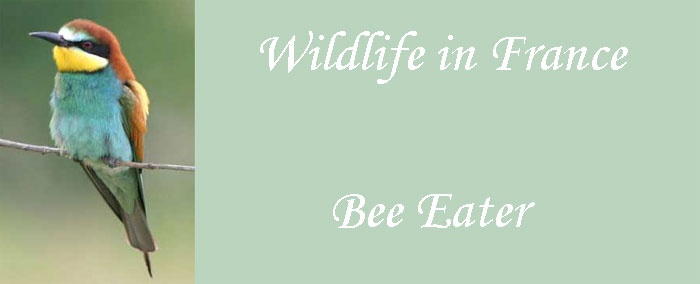
Bee eater Merops apiaster Guêpier d'Europe
The European Bee eater is about the size of a Thrush (28 cm with an average weight of 60 g and a wingspan of 45-50 cm) and is a truly beautiful bird both visually and vocally with no chance of being confused with anything else. They have an agile flight, rather swallow like, but also like swallows they are rather awkward on the ground which they avoid preferring to perch on posts, wires or dead branches. They are one of our most colourful birds with a blue-green turquoise abdomen, chest and lower wings, reddish-brown on the back, the cap and the top of the wings, dark green tail and long slightly curved black beak. Bib yellow with black border, black eyes with red iris.
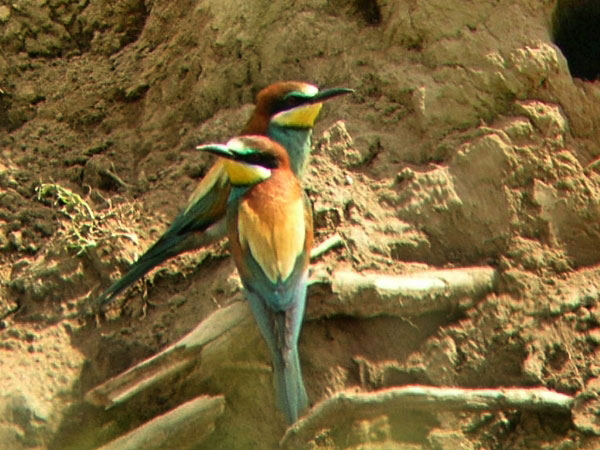
Prior to 1980 this summer visiting bird was only
to be found in
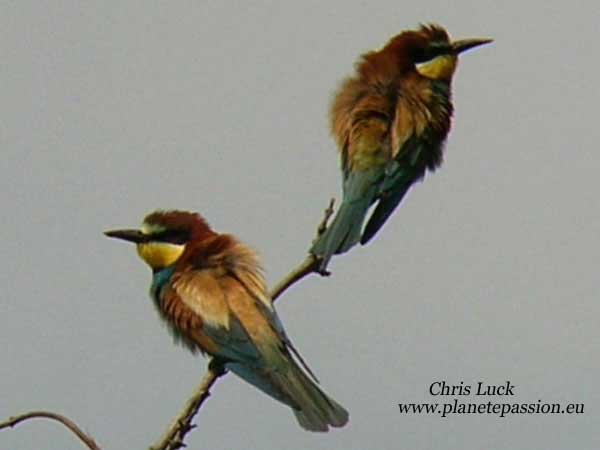
Bee eaters arrive from their over wintering in
either West or South Africa in mid May and either create a new nest tunnel
or restore one that has been previously used. The tunnel of up to 2 metres
in length, is made in sandy soil of a fairly specific “granulation” that is
soft enough to tunnel in and yet firm enough to prevent collapse, something
that is very important when constructed in fields full of cattle which they
frequently are! It is almost always in close proximity to water, hence
riversides, lakes and disused quarries that can be dry or partly flooded
where the birds either dig new tunnels or restore tunnels from the previous
year. The riverside nest sites are particularly vulnerable to flooding
during periods of extreme rainfall and significant losses can occur!
Bee eaters don’t really have a song as such but their calls are distinctive and will often be heard before the birds are seen and when there are several together the combined calling can take the form of babbling or warbling song.
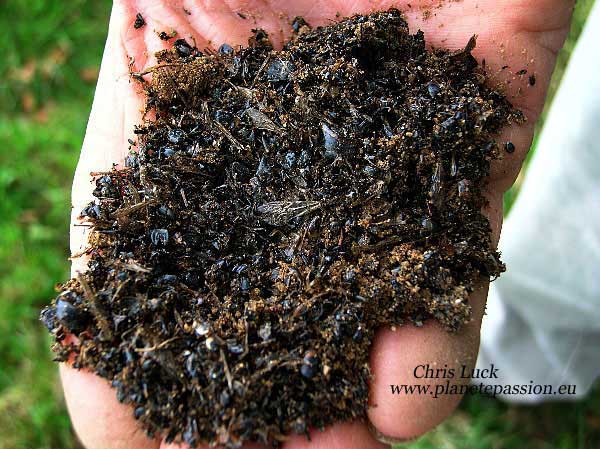
They pair for life,
generally nest in colonies and are easily seen perching in dead trees or
similar in close proximity to the nest site where, in the initial period
following their arrival, the males can be seen presenting the females with
food which consists of a range of larger insects; bush crickets,
grasshoppers, bumble bees, honey bees, wasps and hornets are particularly
popular. These are caught on the wing, the method of hunting being similar
in some ways again to that of swallows except that once caught they are held
sideways in their beak and killed by hitting them against a branch,
occasionally creatures such as lizards will be taken from the ground.
Normally 5 or 6 eggs are laid which take about 3 weeks to hatch, then about
a month after hatching the young birds start to come out of the nest cavity,
but remain very close to enable them to dive back in at the slightest
threat. Towards the end of August or early in September the nest sites are
completely abandoned and the birds start to form pre-migration groups, again
this is similar to the behaviour of swallows, and large groups of as many as
60, 70 or
perhaps more birds can be observed gathering in the same place before
departing on their long journey to their winter home. The migration from
Bee eaters shot on migration in Malta source CABS
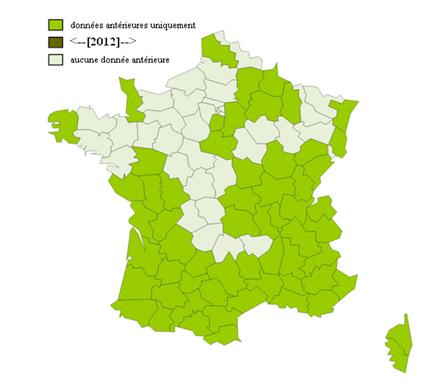
Bee eater nesting 2012
A terrible year for Bee eaters in the Vienne 2013 HERE


